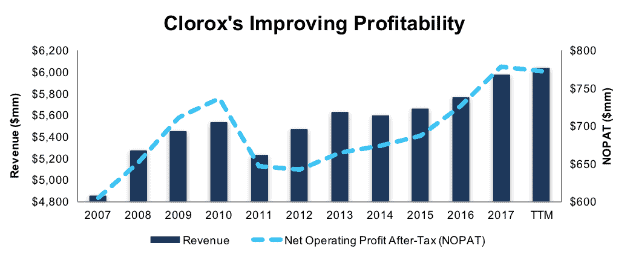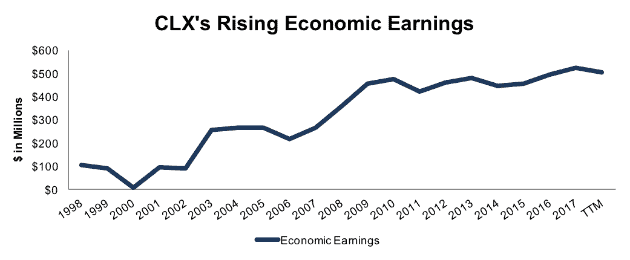Two new stocks make January’s Exec Comp Aligned with ROIC Model Portfolio, available to members as of January 12, 2018.
Recap from December’s Picks
Our Exec Comp Aligned with ROIC Model Portfolio (+3.8%) outperformed the S&P 500 (+3.6%) last month. The best performing stock in the portfolio was Children’s Place (PLCE), which was up 14%. Overall, eight out of the 15 Exec Comp Aligned with ROIC stocks outperformed the S&P in December, while 11 had positive returns.
Since inception, this model portfolio is up 31% while the S&P 500 is up 30%.
The success of this Model Portfolio highlights the value of our Robo-Analyst technology, which scales our forensic accounting expertise (featured in Barron’s) across thousands of stocks.
This Model Portfolio only includes stocks that earn an Attractive or Very Attractive rating and align executive compensation with improving ROIC. We think this combination provides a uniquely well-screened list of long ideas because return on invested capital (ROIC) is the primary driver of shareholder value creation.[1]
New Stock Feature for January: The Clorox Company (CLX: $142/share)
The Clorox Company (CLX), consumer products giant, is the featured stock in January’s Exec Comp Aligned with ROIC Model Portfolio. We originally featured Clorox as a Long Idea in August 2011 and, then, again in September 2017. Clorox’s history of dividend growth and strong fundamentals earn it a spot in our most recent Dividend Growth and Focus List – Long Model Portfolios as well.
Over the past decade, CLX has grown revenue by 2% compounded annually while after-tax profit (NOPAT) has grown 3% compounded annually, per Figure 1. Over the same time, CLX’s NOPAT margin has improved slightly from 12.5% in 2007 to 12.8% TTM. Further highlighting the strength of its business, CLX has generated cumulative free cash flow (FCF) of $3.2 billion (18% of market cap) over the past five years.
Figure 1: CLX Revenue & NOPAT Growth Since 2007
Sources: New Constructs, LLC and company filings
Executive Compensation Plan Helps Drive Shareholder Value Creation
We first highlighted CLX’s strong corporate governance in 2011 and the strategic focus on maximizing economic profit, aka economic earnings. The transparency of the firm’s financial reporting remains best-in-class. In fiscal 2017, 50% of short-term incentives and 100% of long-term performance shares were tied to economic profit goals.
Recently, CLX removed economic profit from its short-term goals, but the metric remains the sole measurement for long-term performance shares. The long-term focus on economic profit helps ensure executives continue to be good stewards of capital and grow shareholder value. Per Figure 2, CLX has grown economic earnings 7% compounded annually over the past decade, and 9% compounded annually since 1998.
Figure 2: CLX’s Economic Earnings Since 1998
Sources: New Constructs, LLC and company filings
CLX’s Valuation Provides Quality Risk/Reward
At its current price of $142/share, CLX has a price-to-economic book value (PEBV) ratio of 1.2. This ratio means the market expects CLX’s NOPAT to only grow by 20% over the remaining life of the firm. This expectation seems pessimistic given CLX has grown NOPAT 3% compounded annually over the past decade and 5% compounded annually since 1998.
If CLX can maintain TTM NOPAT margins (13%), and grow NOPAT by 3% compounded annually for the next decade, the stock is worth $172/share today – a 21% upside.
Impacts of Footnotes Adjustments and Forensic Accounting
Our Robo-Analyst technology enables us to perform forensic accounting with scale and provide the research needed to fulfill fiduciary duties. In order to derive the true recurring cash flows, an accurate invested capital, and a real shareholder value, we made the following adjustments to The Clorox Company’s 2017 10-K:
Income Statement: we made $262 million of adjustments, with a net effect of removing $78 million in non-operating expense (1% of revenue). We removed $92 million in non-operating income and $170 million in non-operating expenses. You can see all the adjustments made to CLX’s income statement here.
Balance Sheet: we made $4.2 billion of adjustments to calculate invested capital with a net increase of $3.8 billion. One of the largest adjustments was $1.7 billion related to accumulated goodwill. This adjustment represented 62% of reported net assets. You can see all the adjustments made to CLX’s balance sheet here.
Valuation: we made $3.2 billion of adjustments with a net effect of decreasing shareholder value by $2.8 billion. The largest adjustment to shareholder value was $2.5 billion in total debt, which includes $274 million in operating leases. This debt adjustment represents 17% of CLX’s market value. Despite the decrease in shareholder value, CLX remains undervalued.
This article originally published on January 18, 2018.
Disclosure: David Trainer, Kyle Guske II, and Peter Apockotos receive no compensation to write about any specific stock, style, or theme.
Follow us on Twitter, Facebook, LinkedIn, and StockTwits for real-time alerts on all our research.
[1] Ernst & Young’s recent white paper, “Getting ROIC Right”, proves the superiority of our research and analytics.
Click here to download a PDF of this report.
Photo Credit: learningvideo.com (Flickr)


